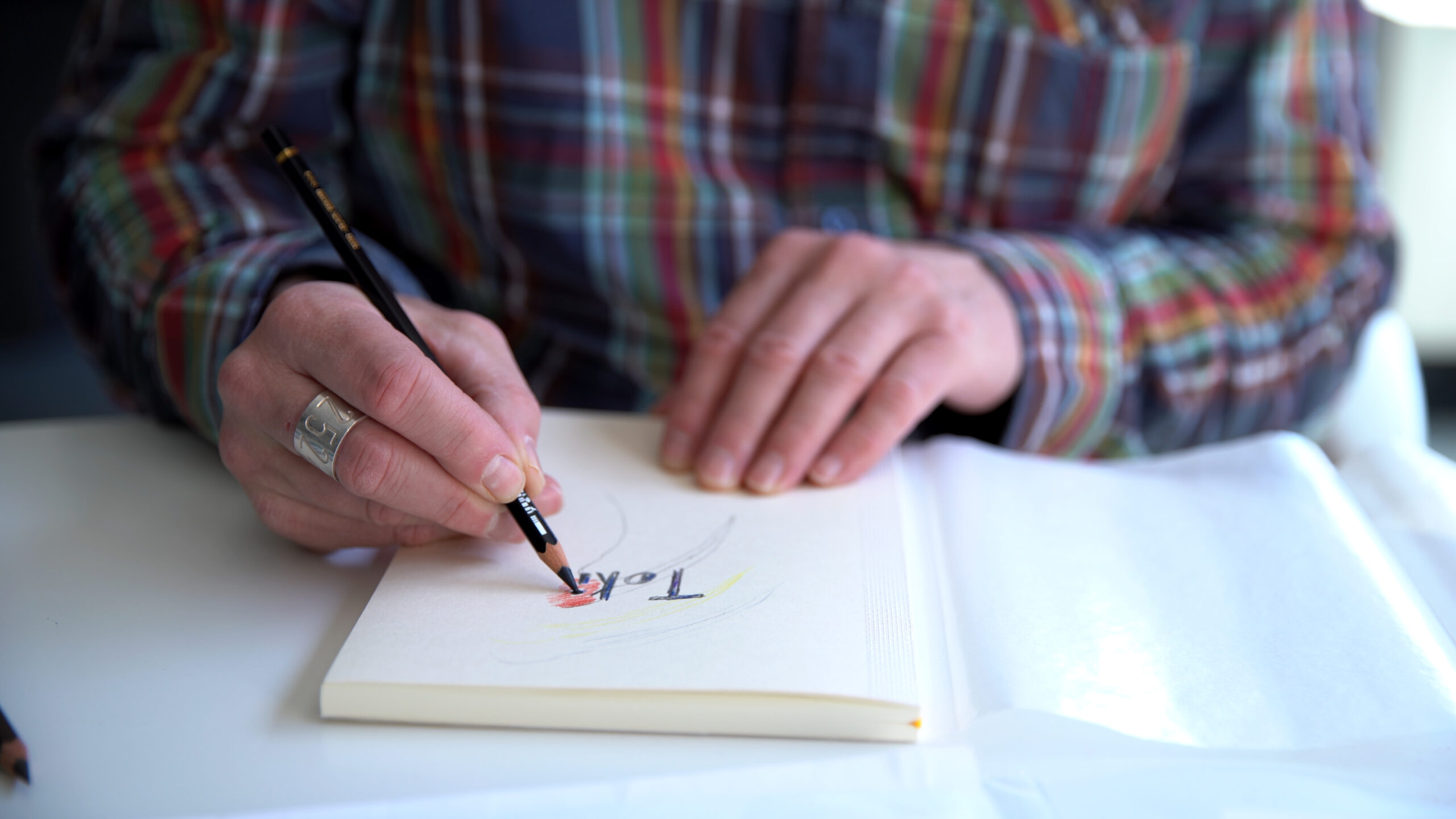Der Schrei des Riesenalks

Der Schrei des Riesenalks (The Cry of the Great Auk) is a film project by Antoine Prum based on the life and work of the self-declared “misunderstanding scientist” Wolfgang Müller from Berlin-Kreuzberg
“I might be doing a radio play today, a drawing tomorrow, music the day after tomorrow, or maybe nothing at all.”
—Wolfgang Müller
In the 1980s, Wolfgang Müller, born in Wolfsburg, Germany, in 1957, fronted the legendary group Die Tödliche Doris. Doris manifested itself in every conceivable medium, each time disregarding its respective rules with radical consistency and great pleasure. Today, Müller’s work is very similar in many ways, though only at second glance. It consists of a kind of proliferating conceptual-Dadaistic system, or rather anti-system, based on coincidences and idiosyncratic associations, which accommodates pretty much everything and which, in its entirety and beauty, must be viewed as the “moral temperance” of its time – an idea summed up by the pop theorist Diedrich Diederichsen when he writes in an article that “Müller is a reverse conceptualist” (Tagesspiegel, 09/19/03).
At first glance, it nevertheless looks as if Müller’s work, with its absurd twists, is mainly aimed at ridiculing science (modernity’s fixation with science) – and the tendency – understandable in view of the angst that comes with total artistic freedom – of artists needing a restriction, a “trademark”. Müller’s system circles around propositions that initially astound or even frighten us by their supposed deviousness, thereby obscuring the fact that they speak to familiar categories such as nature, nation and history, society, sexuality or metaphysics.
Some of these trademarks are Iceland, ornithology and botany, where Müller’s private mythology combines with areas of special interest such as amber and shellac, Nordic mythology, fat balls for birds and the German liberal party FDP, Icelandic transvestites or the Goethe Institute. All of these very different subjects, in an irritating abstraction, are treated as materials of equal value. Presumably, it is this absurdity that triggers the comical effect in his work. Not only art and science are sabotaged in a paradoxically constructive way, but also television, literature and music. Often through coincidences and banalities, an astonishingly realistic image of the world thus unravels.
The result shows how interesting absurdity can be and demonstrates that it is hardly possible to make nonsense, because even what seems like the greatest imaginable nonsense points us to that which makes and shapes sense: curiosity, criticism and humour.
—Dirk Schuenemann
